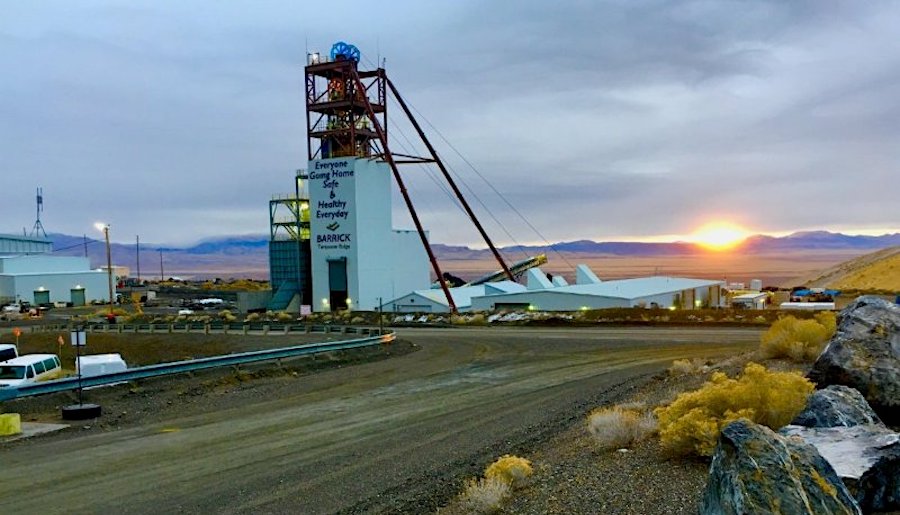Barrick is constructing a third shaft at Turquoise Ridge (owned 75%, Newmont holds 25%), which will allow the mine to roughly double annual production to more than 500,000 oz per year (100% basis), at an average cost of sales of around $720 per ounce, and average all-in sustaining costs of roughly $630 per ounce. Thyssen Mining, the shaft sinking contractor, is now mobilising on site. Dewatering is advancing according to plan, and construction of surface infrastructure for electrical distribution and other mine utilities is well advanced. The capital cost for this project is estimated to be $300-$325 million (100% basis). Initial production from the new shaft is expected to begin in 2022, with sustained production from 2023.
At the end of 2017, Turquoise Ridge had 5.9 Moz of proven and probable gold reserves (Barrick’s 75% share), at an average grade of 15.5 g per tonne—the highest reserve grade in the company’s operating portfolio, and among the highest in the gold industry. The mine added 2.1 Moz of proven and probable gold reserves in 2017 through drilling (Barrick’s 75% share), and the deposit remains open in multiple directions, including at depth.
Mine exploration drilling at Turquoise Ridge in 2018 has continued to expand the deposit in multiple directions. The North Zone Getchell program is targeting an open area of the Getchell Fault up-dip in the northwest portion of the mine. The first hole of the program intersected 16.5 m at 15.3 g per tonne of gold. This intercept extends mineralisation along the fault by 120 m, with further drilling planned along the same structure.
In 2017, exploration drilling discovered mineralisation 180 m northeast of the deposit as part of the Foot Wall Pond Extension program. So far this year, drilling has extended known mineralisation to the northeast by another 120 m, with an intercept of 6.7 m grading 13.9 g per tonne gold. Follow-up drilling will also continue in this area.











